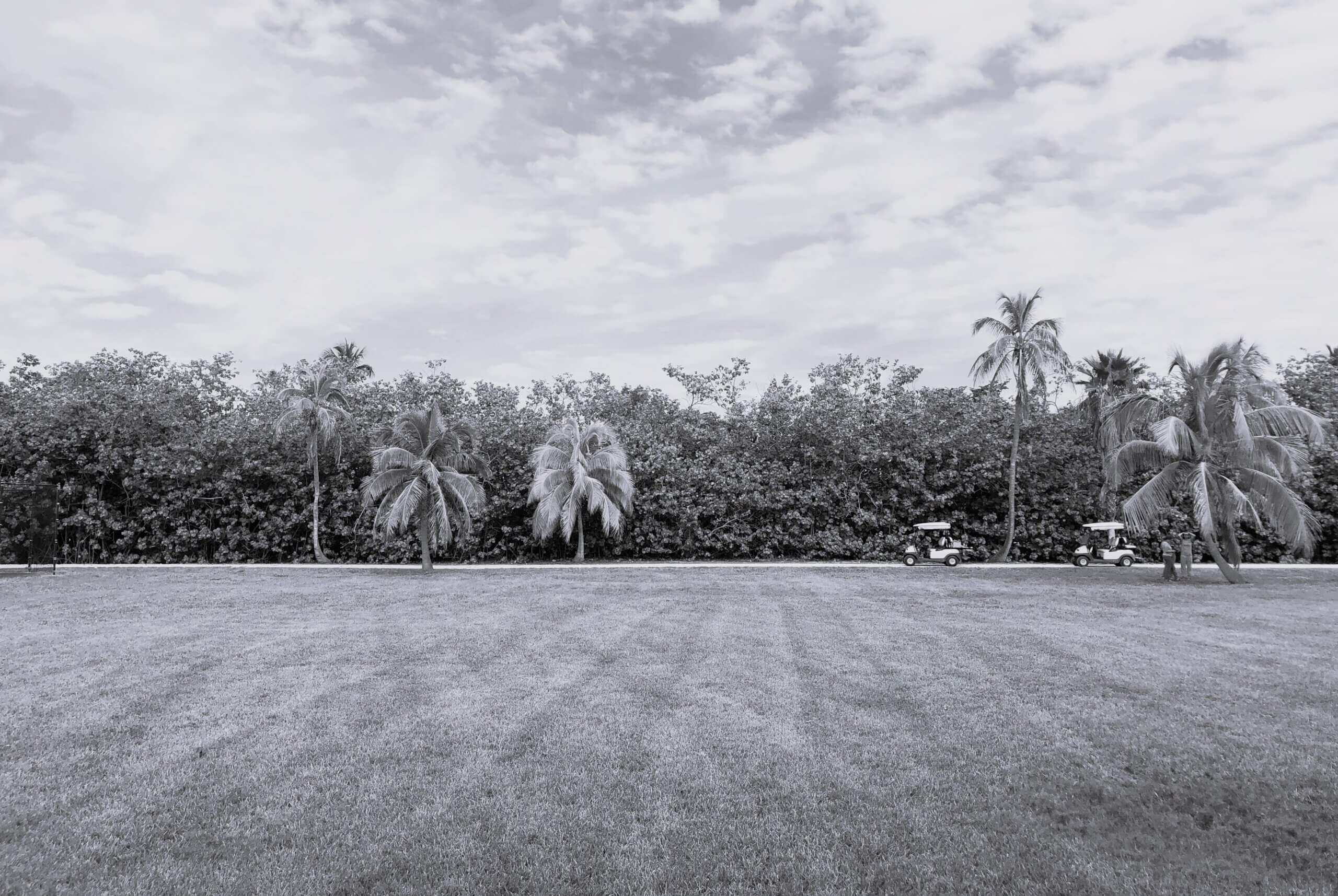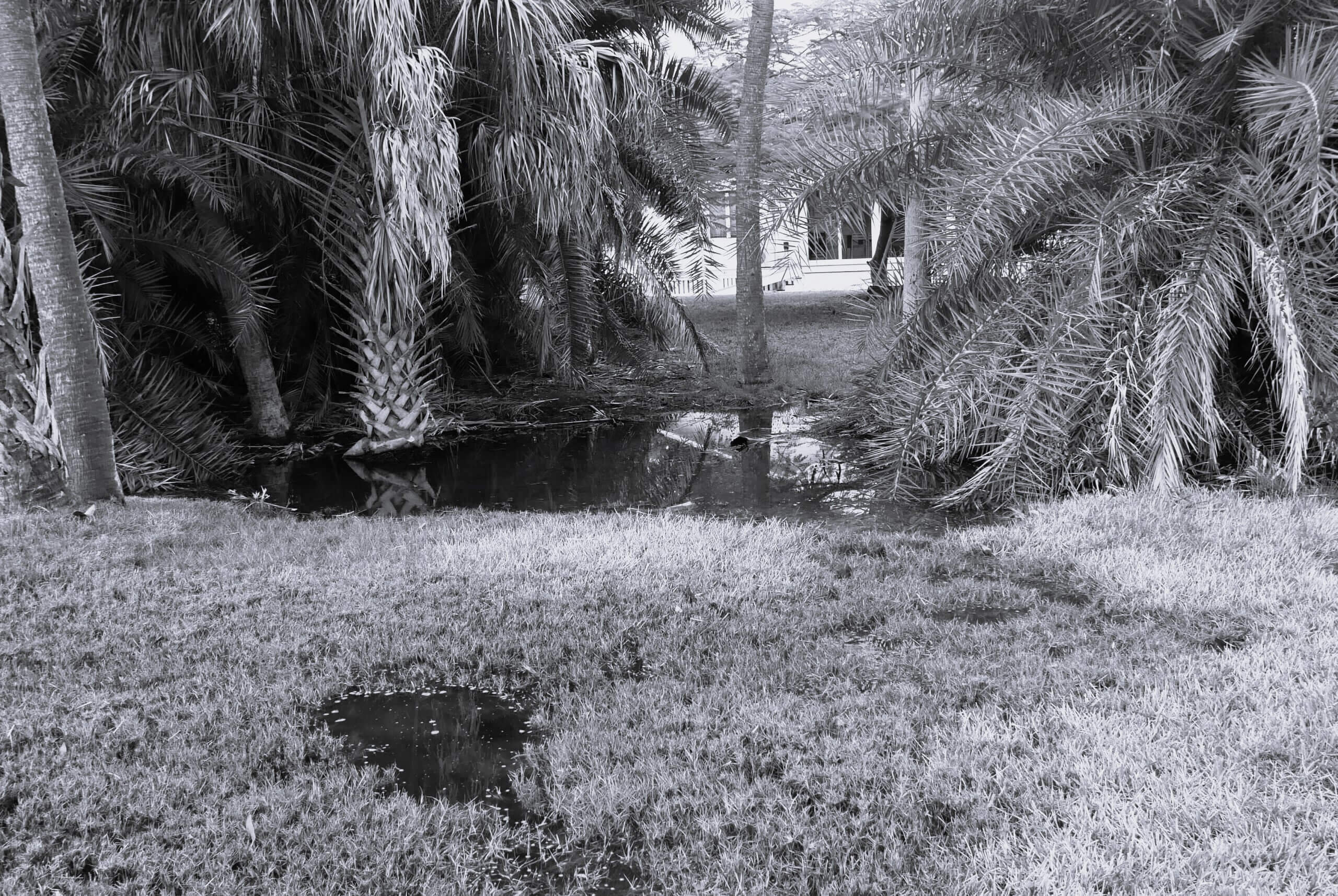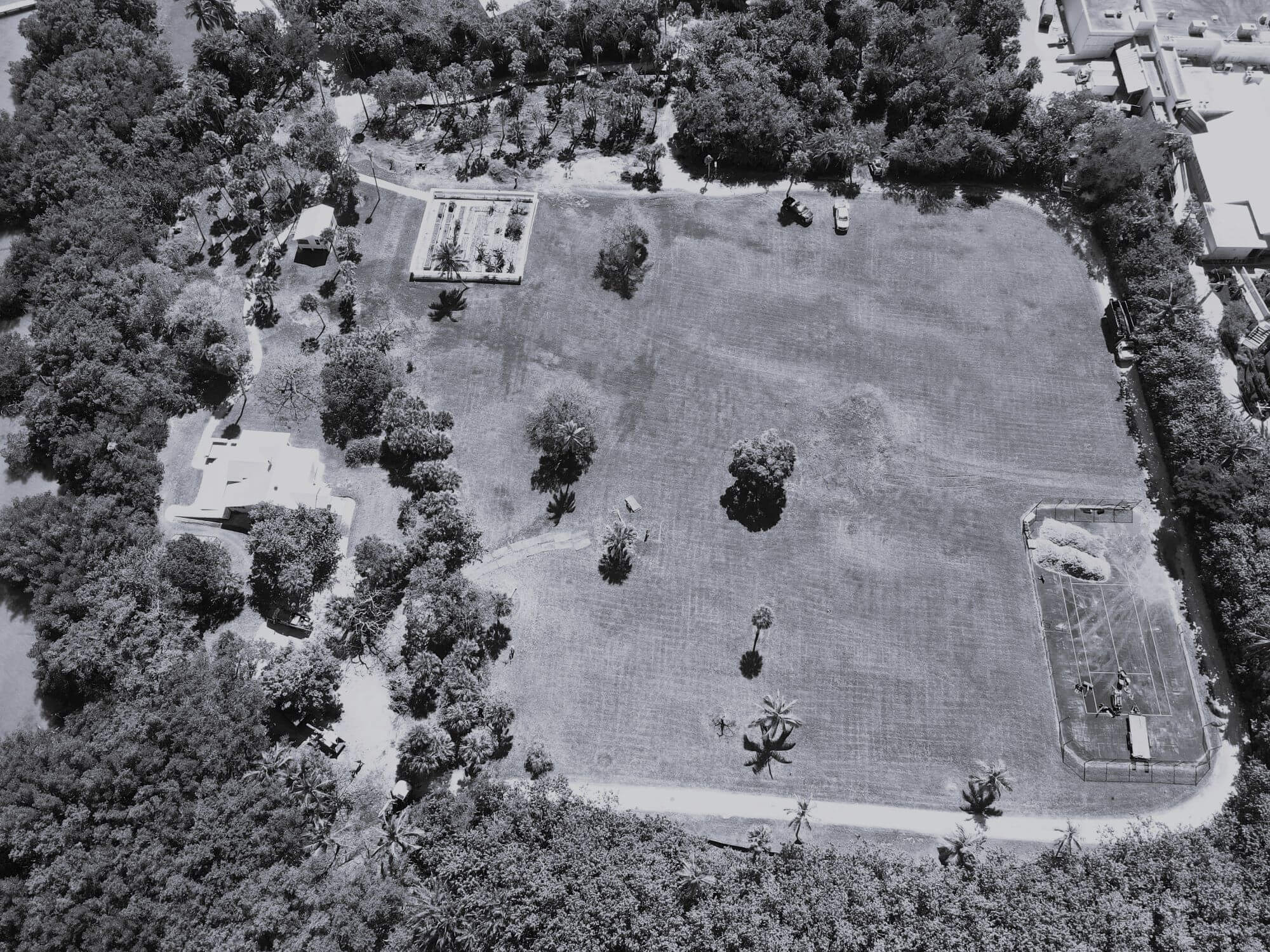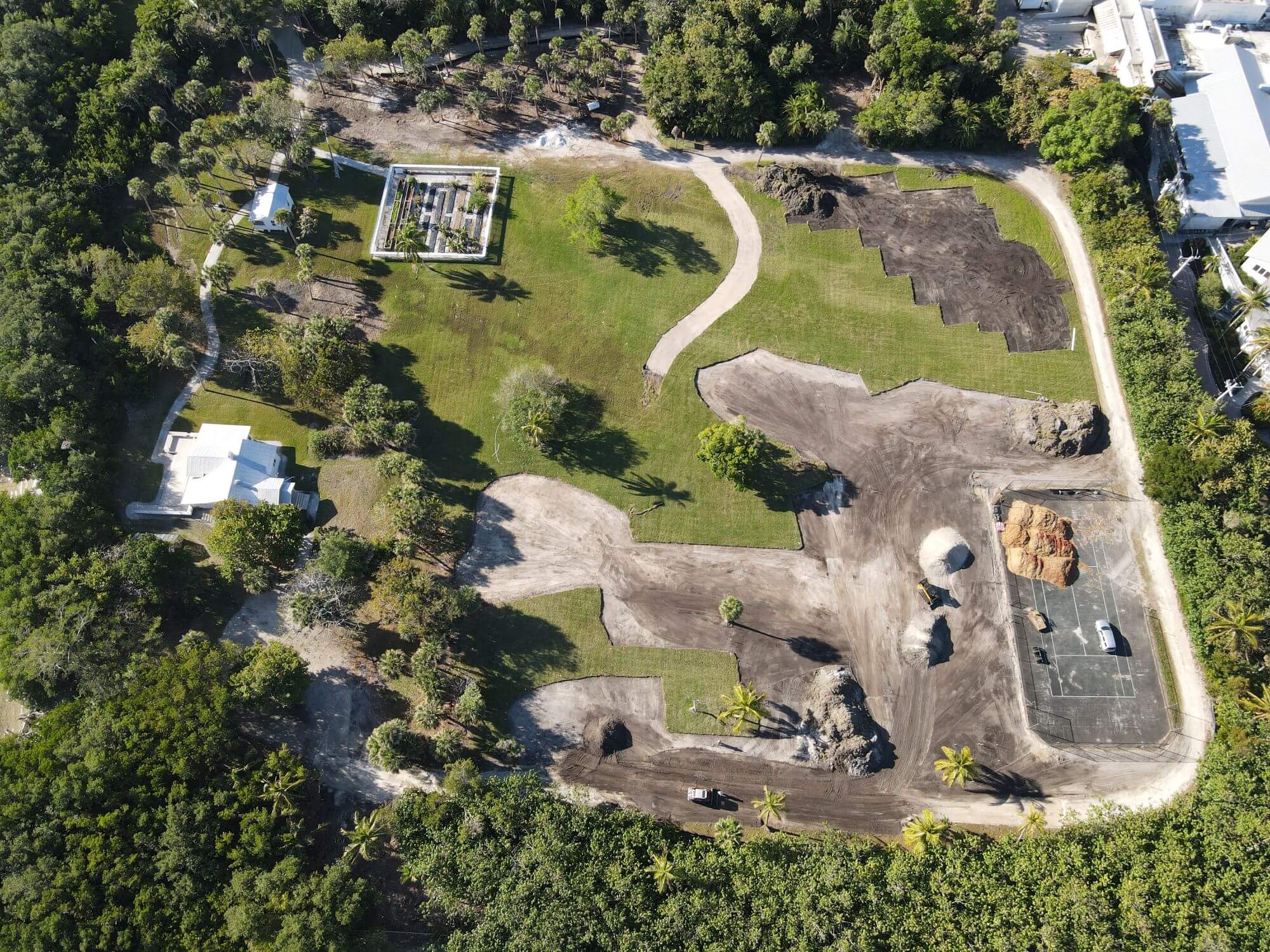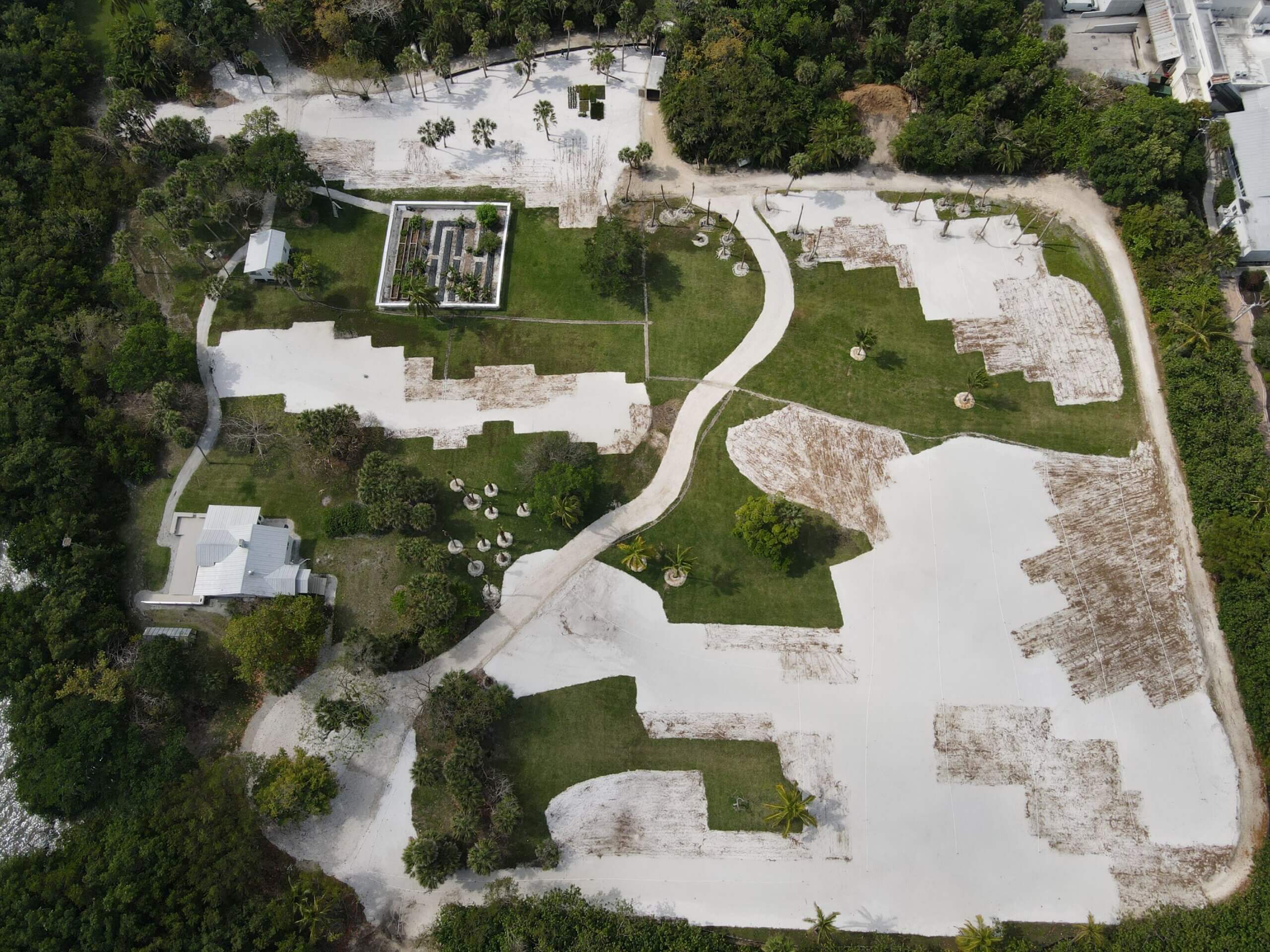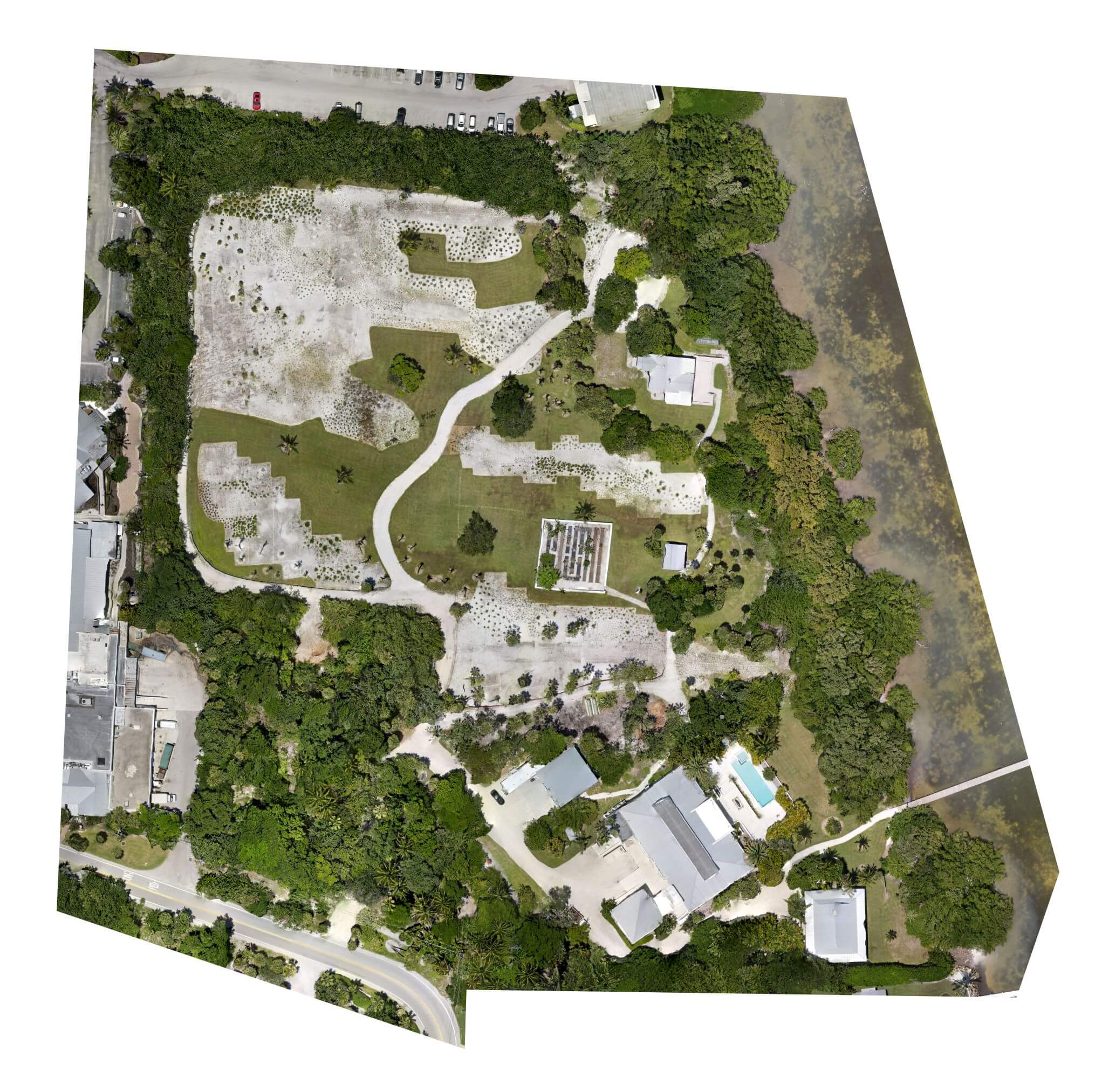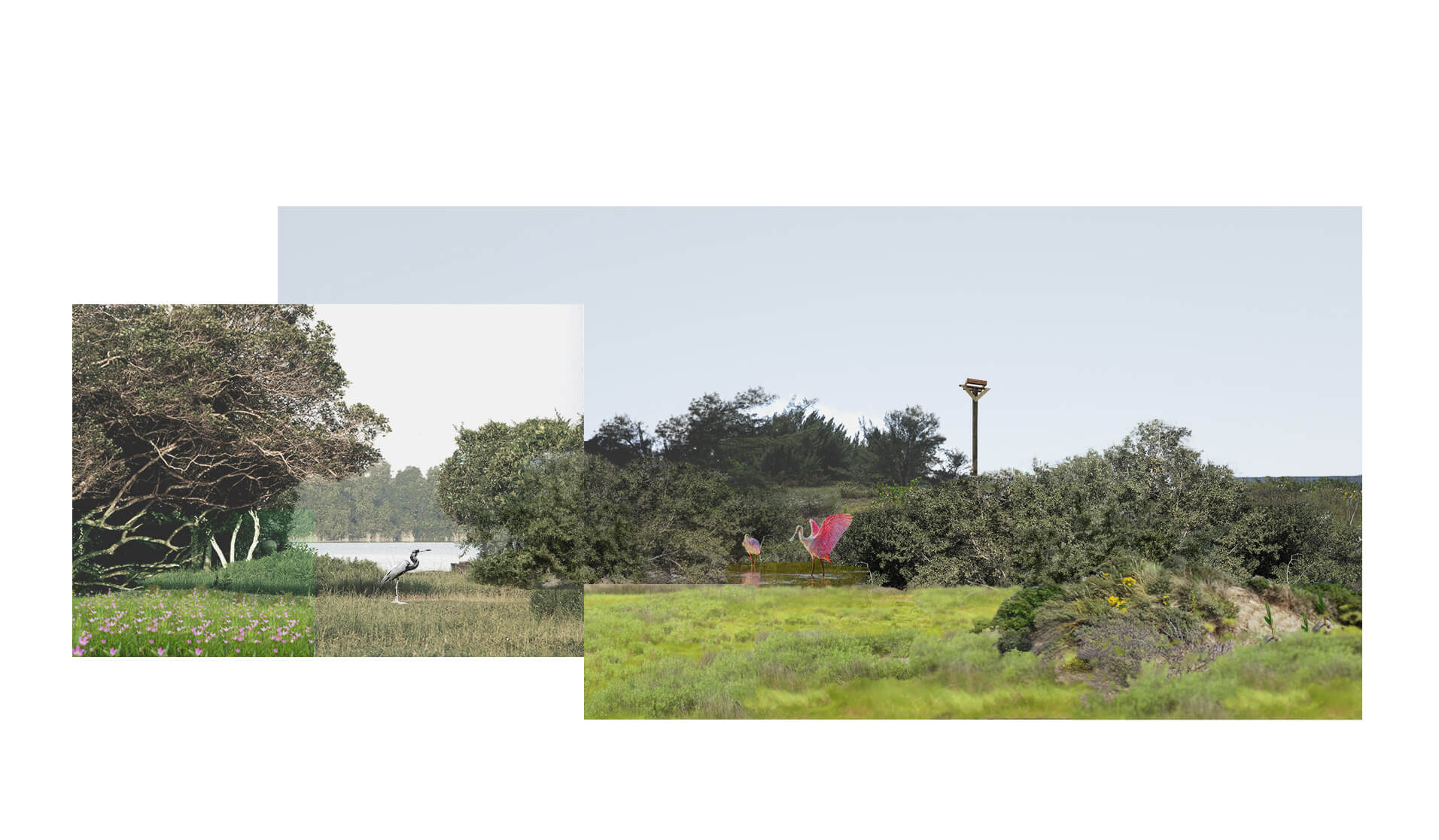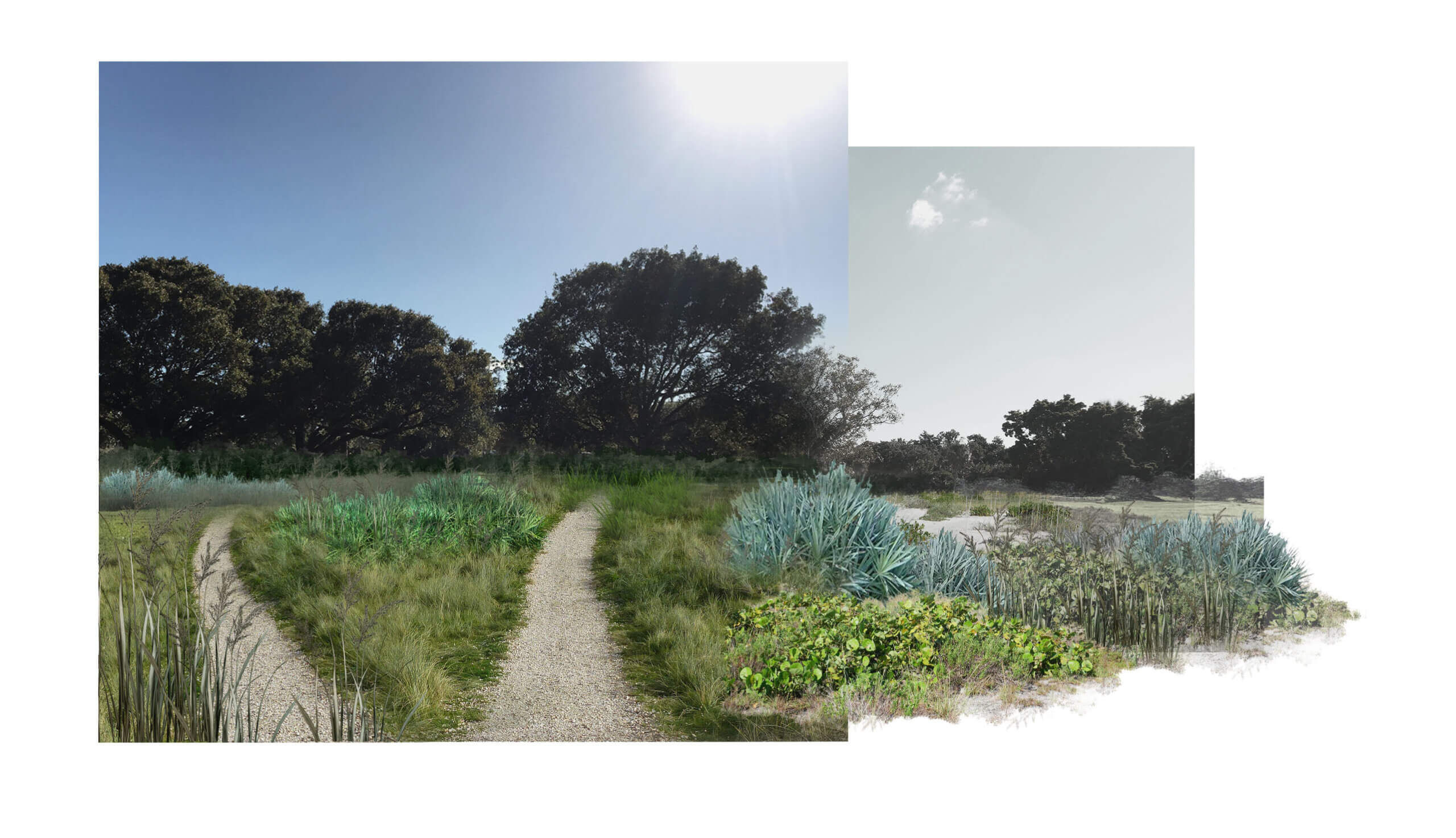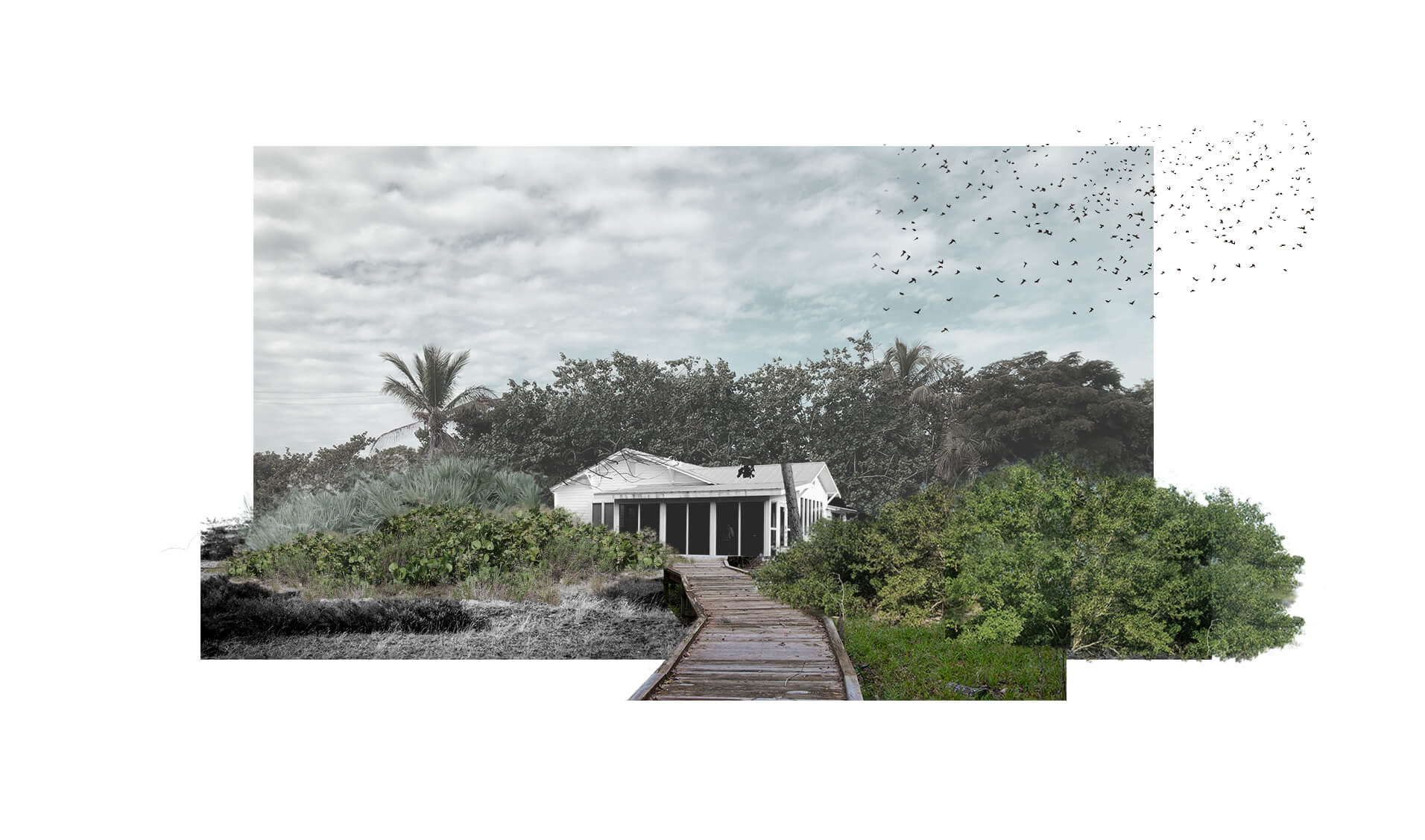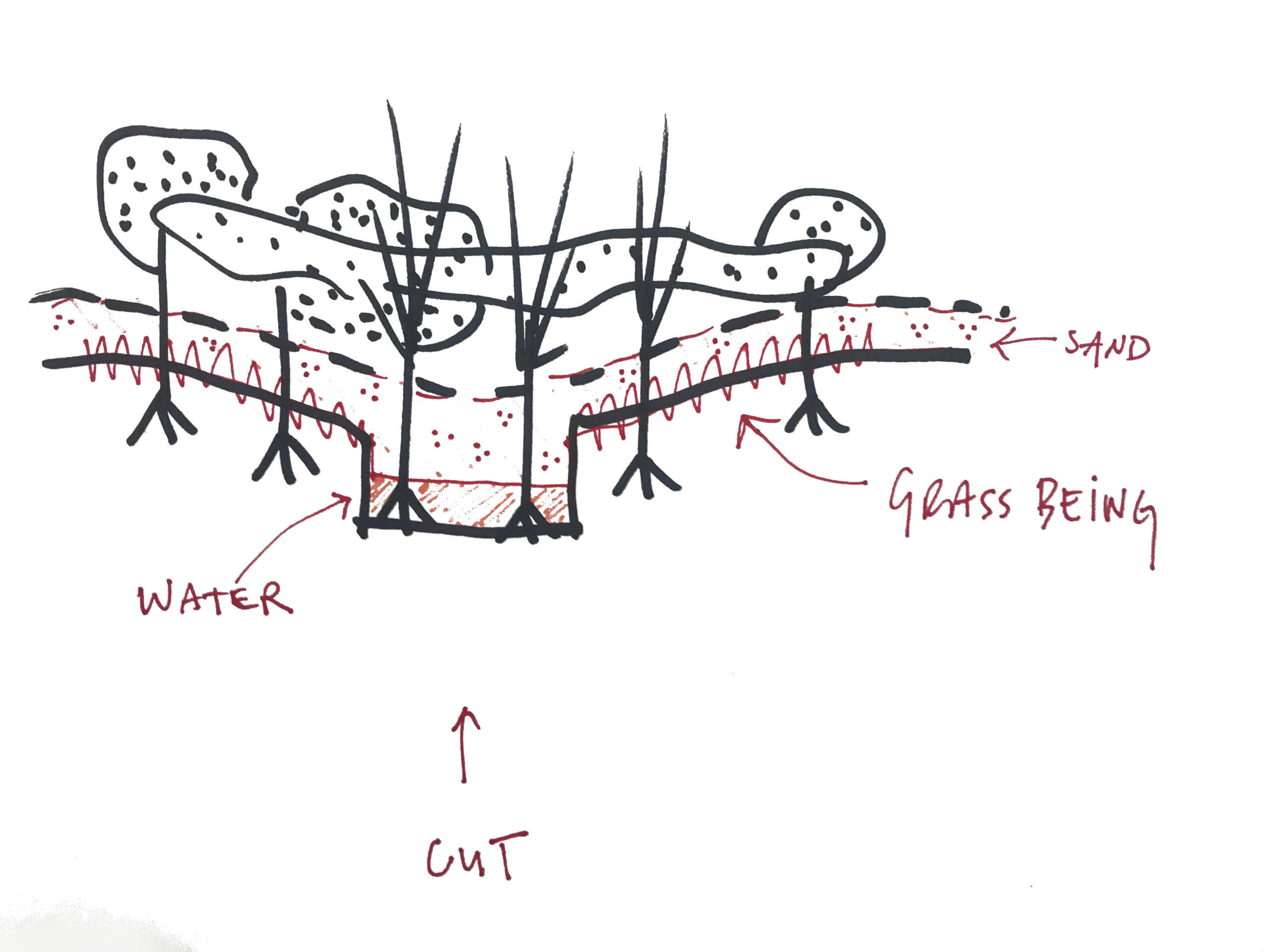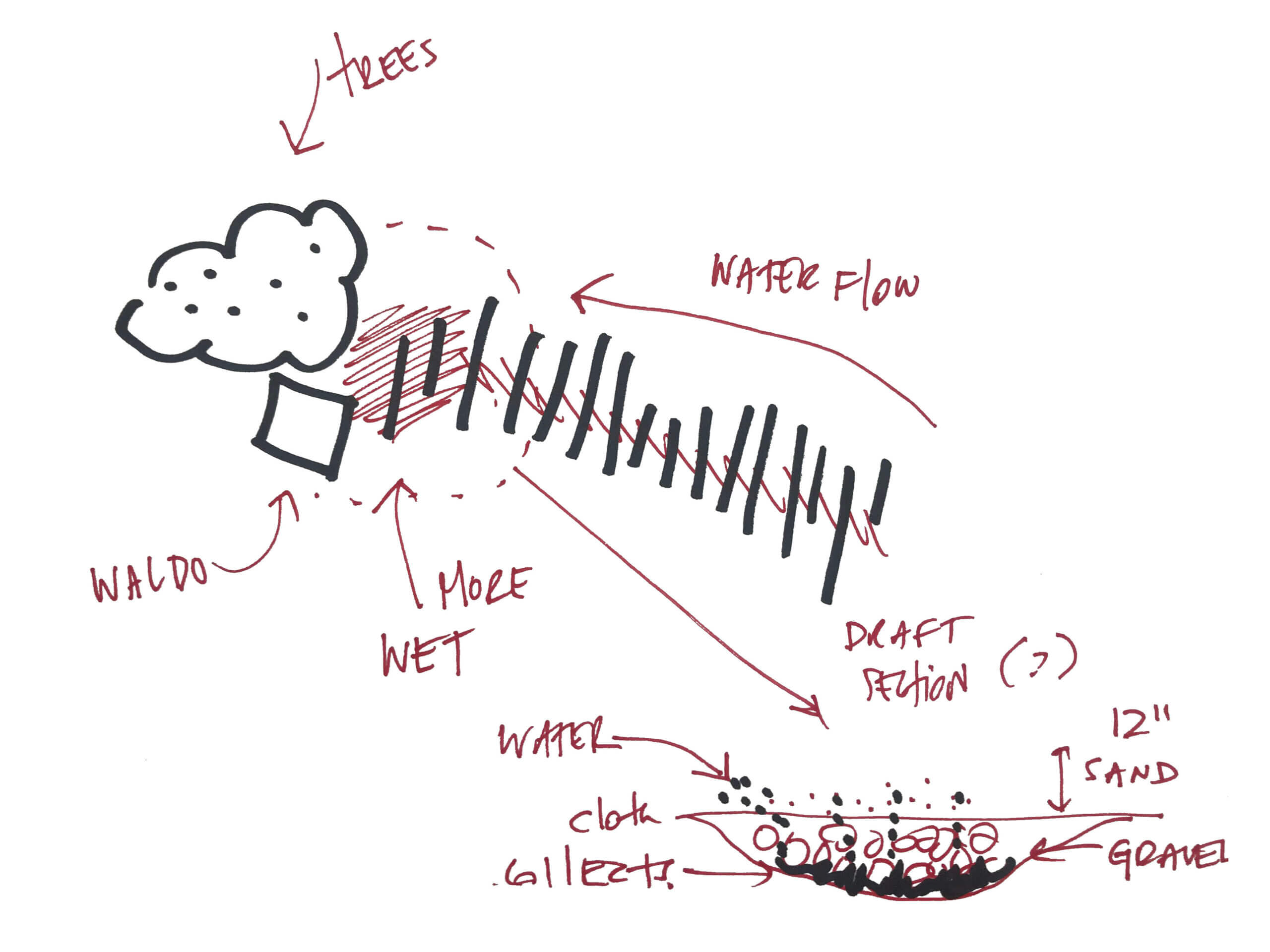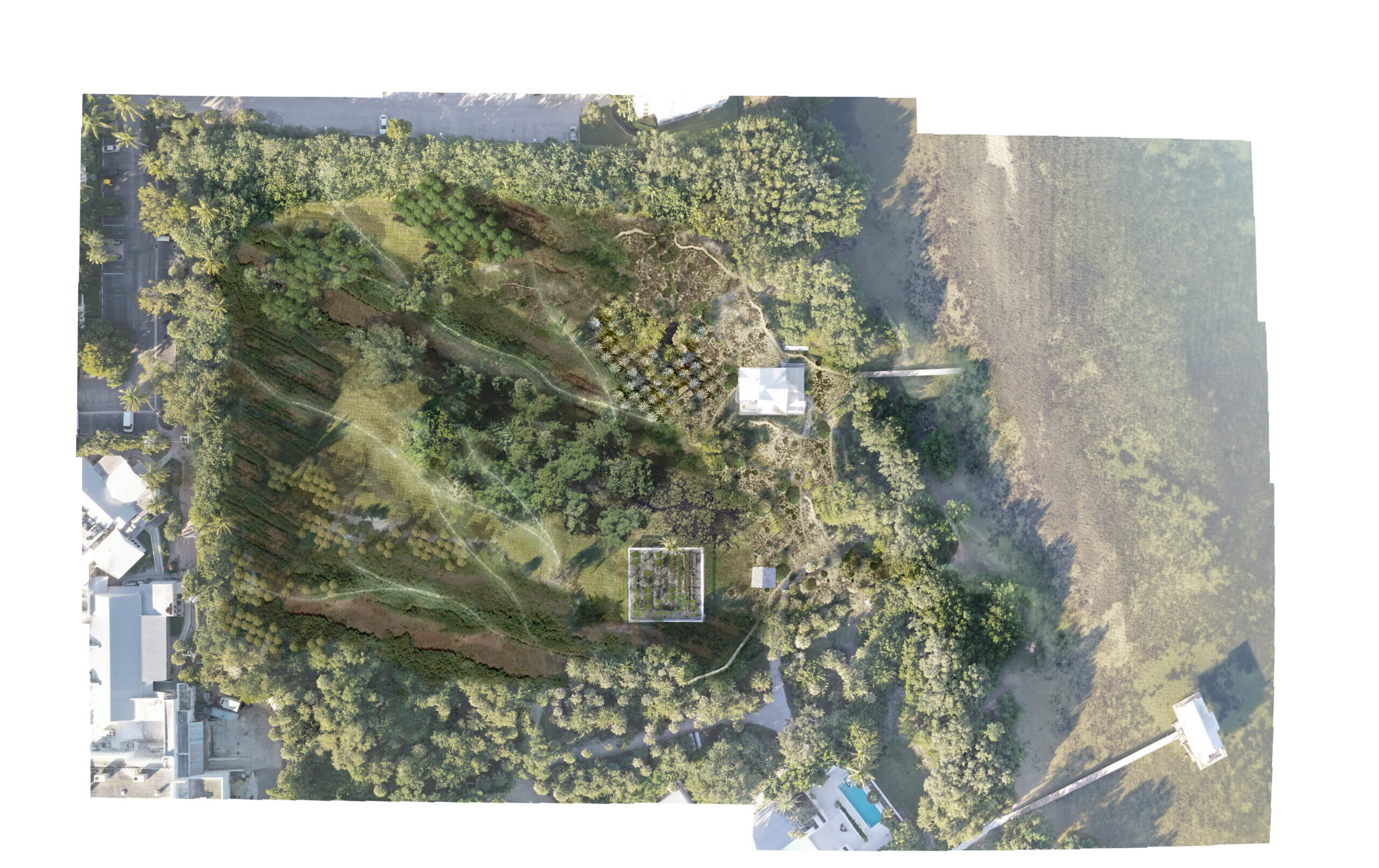Barrier Island Meadow
Design for a Changing Captiva
Design for a Changing Captiva is a long-term adaptation strategy for the Robert Rauschenberg campus on Captiva, Florida. Working with the Robert Rauschenberg Foundation, the Practice Landscape team first completed an ecological assessment plant inventory of the island-wide conditions, highlighting the temporal aspects of a barrier island, including the increasing impact of environmental change. The final design centered around the landscape strategy for the unique ecological zones on site: Dune, Jungle, Campus, Meadow, Mangrove. The landscape strategy replaces the fixity of a masterplan by providing scenarios that vary over time, acknowledging shifting plant communities and maintenance regimes, and integrating of the cultural and ecological landscape.
Collaborators
WXY architects
EDD hydrologists
RS Walsh Landscaping
Sanibel Captiva Conservation Foundation
Collaborators
WXY architects
EDD hydrologists
RS Walsh Landscaping
Sanibel Captiva Conservation Foundation
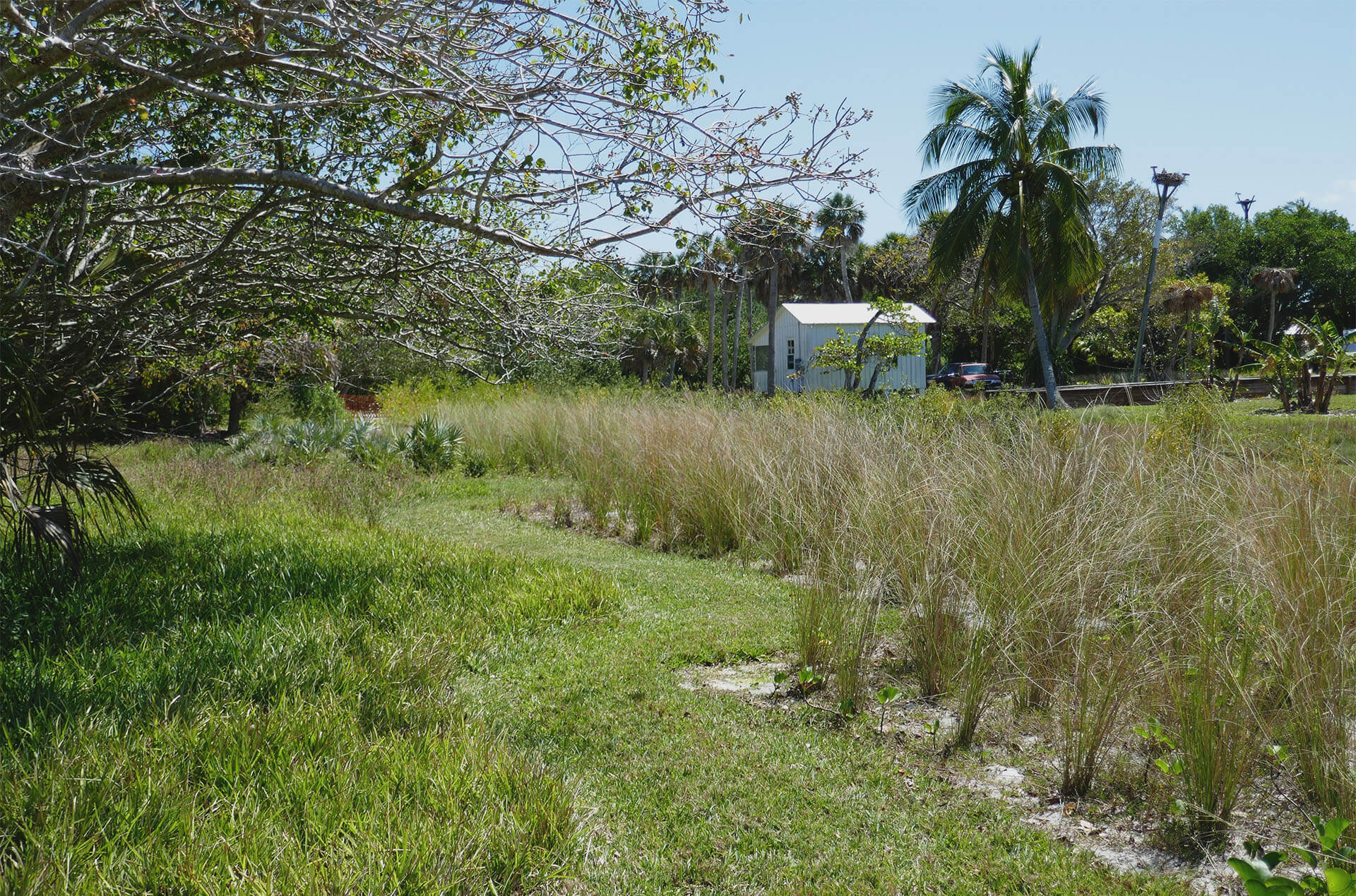
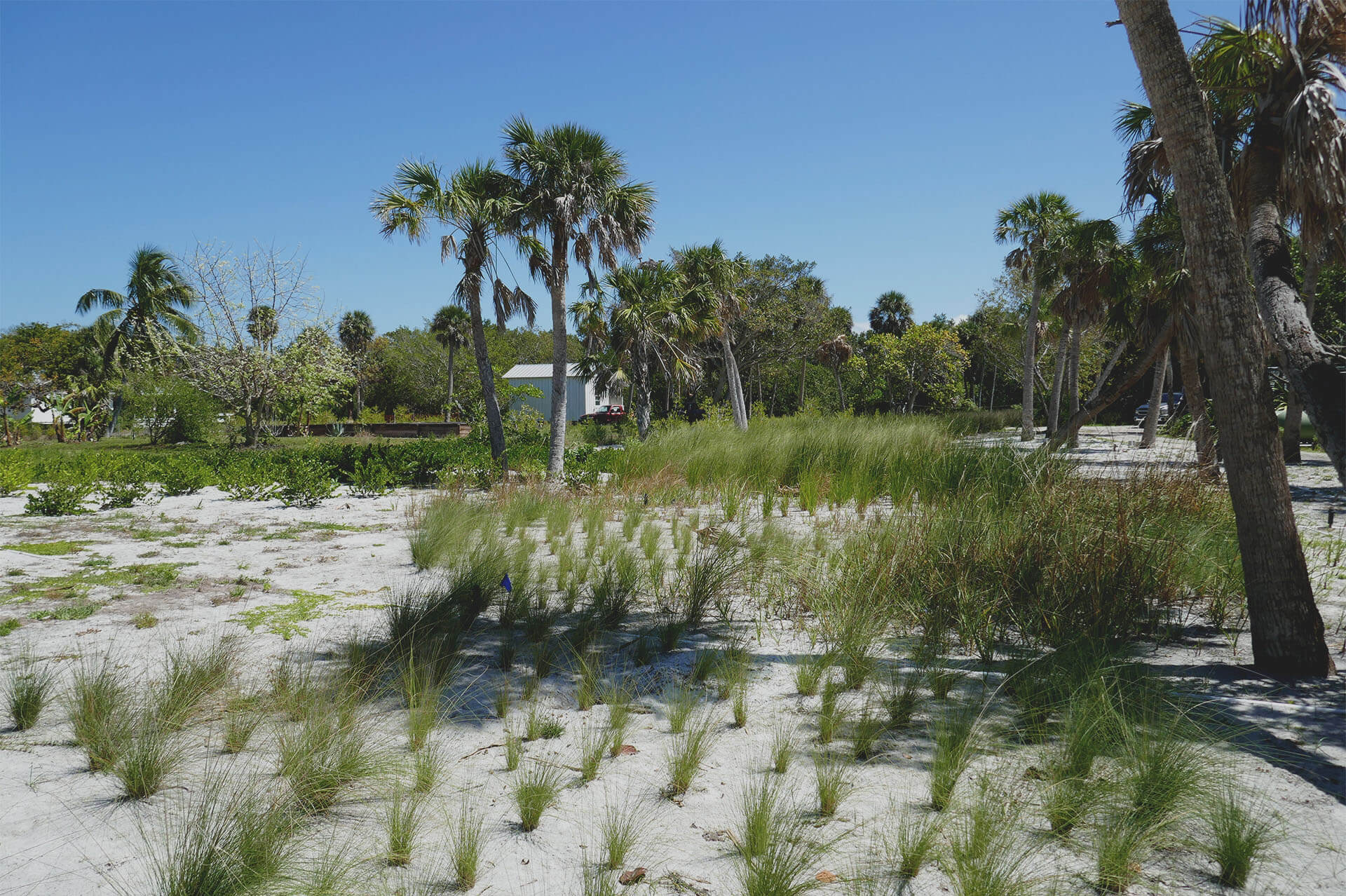
The Coastal Meadow was previously a large mown lawn bordered by a compacted roadway. Sandwiched between the Mangroves in the bay and the parking lot of a nearby shopping mall, the field oscillated between extreme wet and dry, with increasingly saline conditions. Rather than fight the wet and salty environment with seawalls and infrastructure the design works with the changing conditions. A plant-based solution transforms low diversity to high diversity, as roots alleviate compaction and young plants adapt to standing water. First, strategic sections of sod that impeded drainage and groundwater penetration were removed. Then, grasses, dune species, shrubs and trees selected for their adaptability and salt tolerance were planted. The meadow was constructed in spring 2021 by removing segments of the lawn using a sod cutter and planting in sand rather than importing soils. This patchwork approach allowed the ground to maintain some integrity while the new planting filled in. The design anticipates and leaves room for the migration of mangroves landward as water levels in the bay continue to rise.
Since installation, the meadow has adpated to repeated inundation from hurricanes and tropical storms that have battered the barrier island in the Gulf of Mexico. The salt tolerant grasses, woody plants and trees that can withstand periods of extreme wet and dry have continued to spread or self-seed in the sand substrate. The meadow one year after installation (below left) and after Hurricane Ian (below right).
One-year after installation
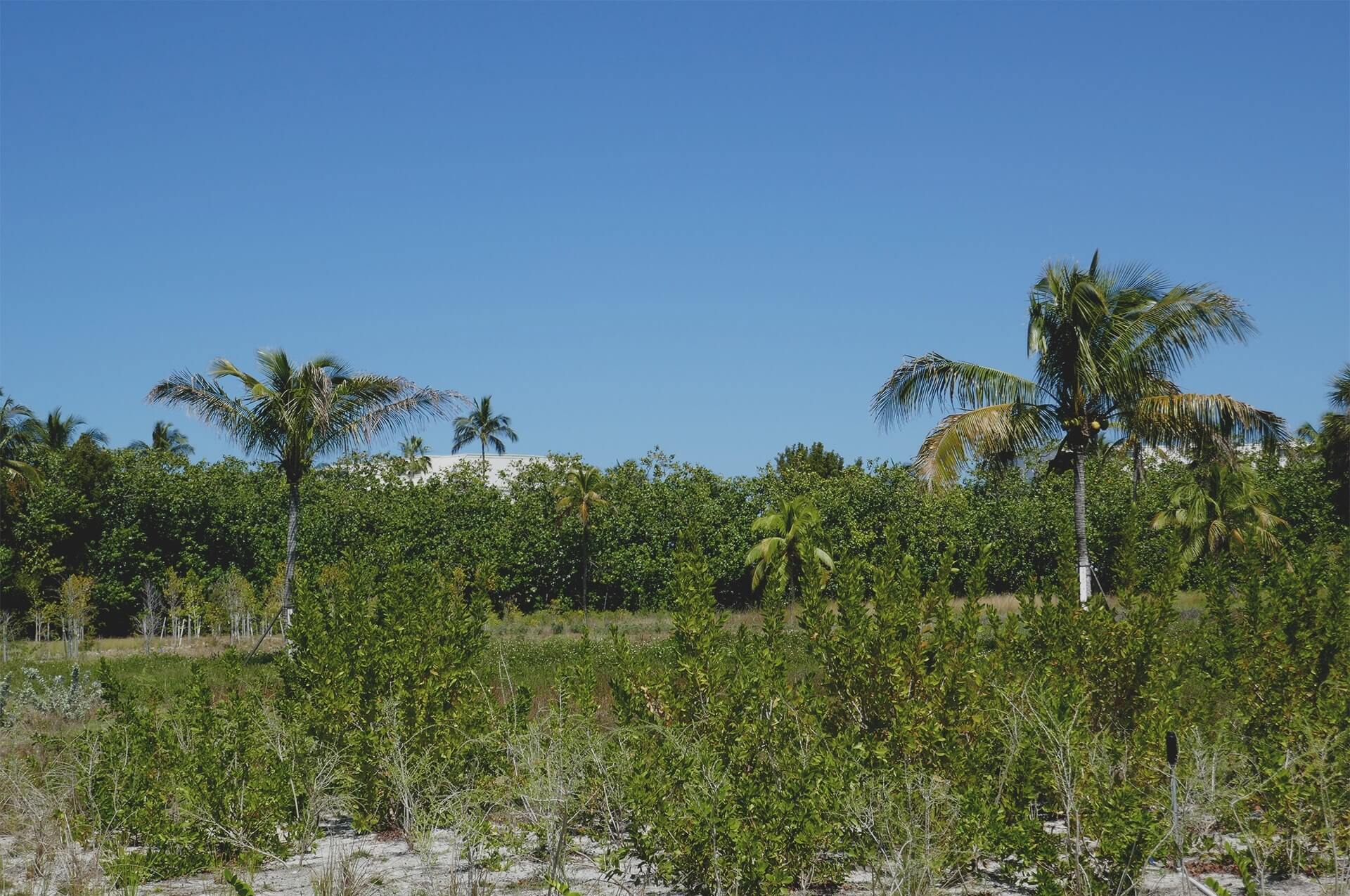
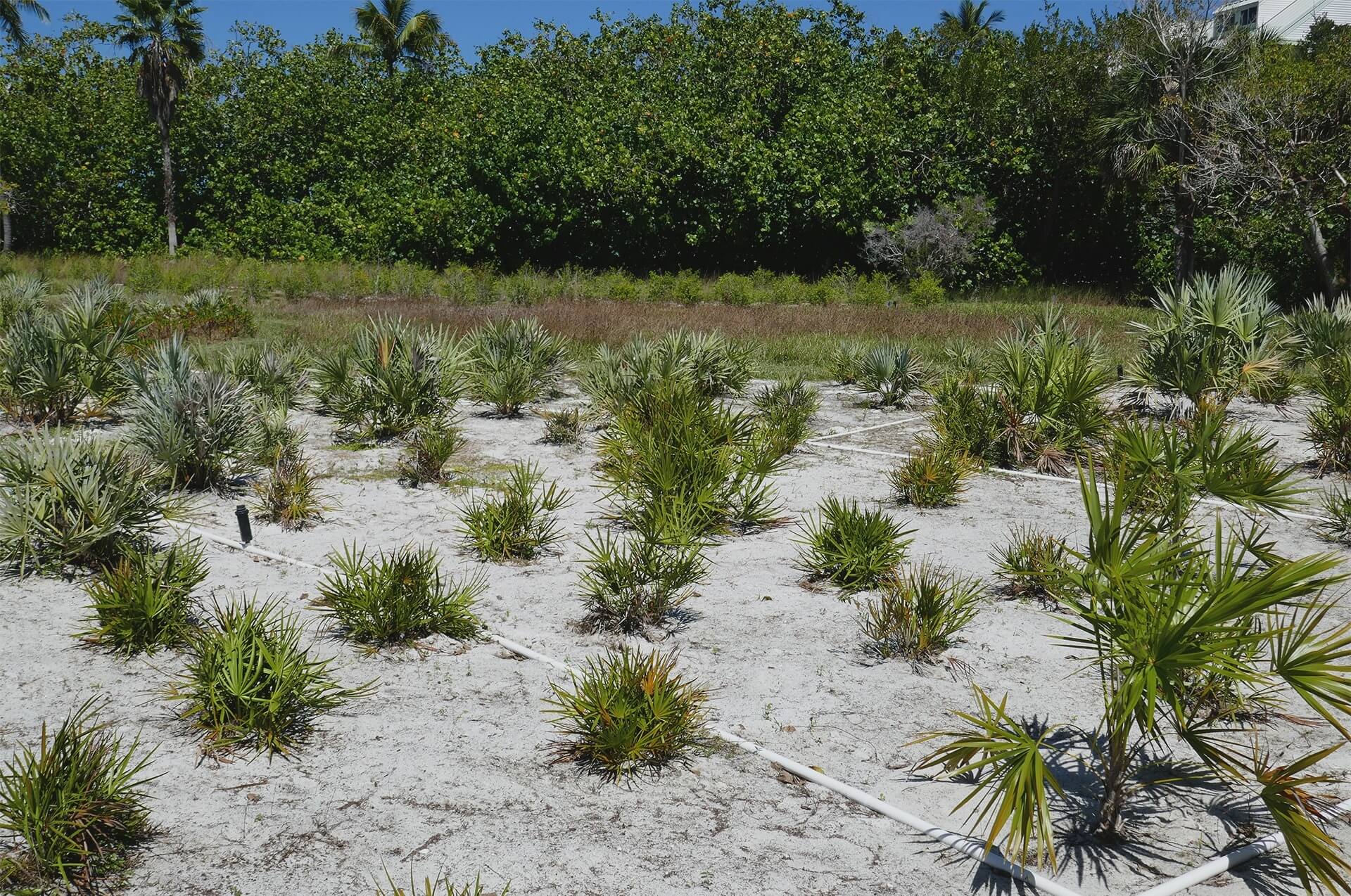
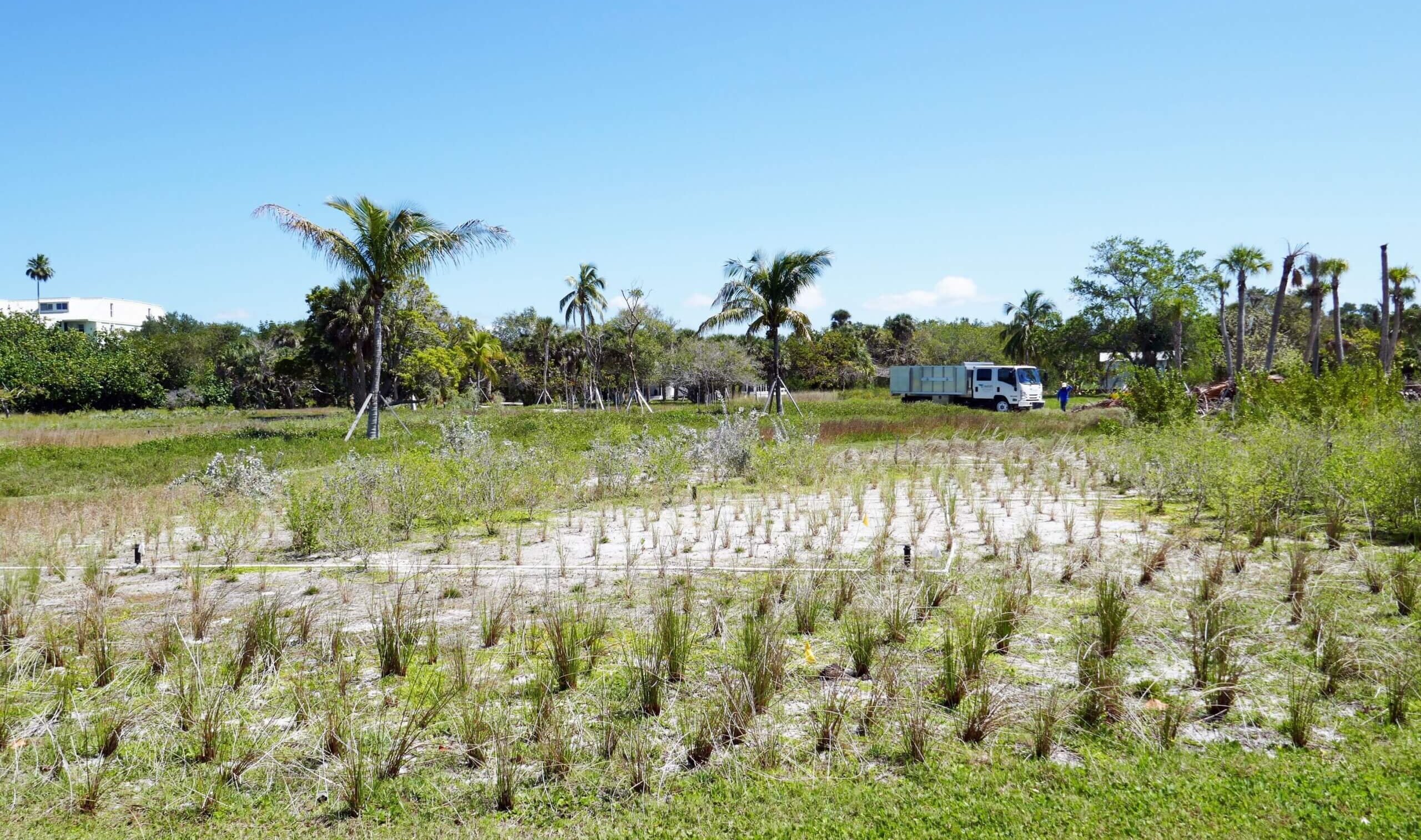
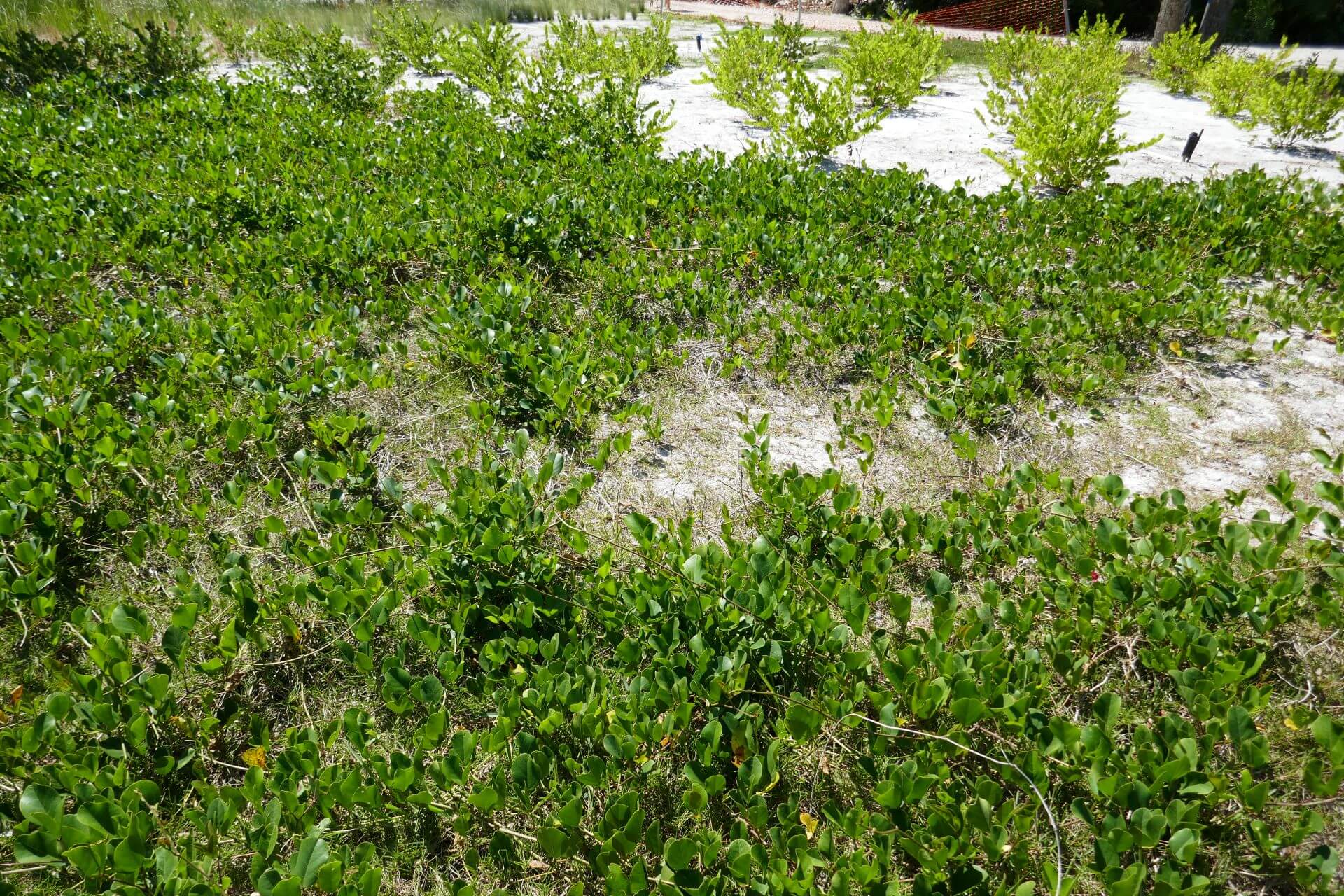
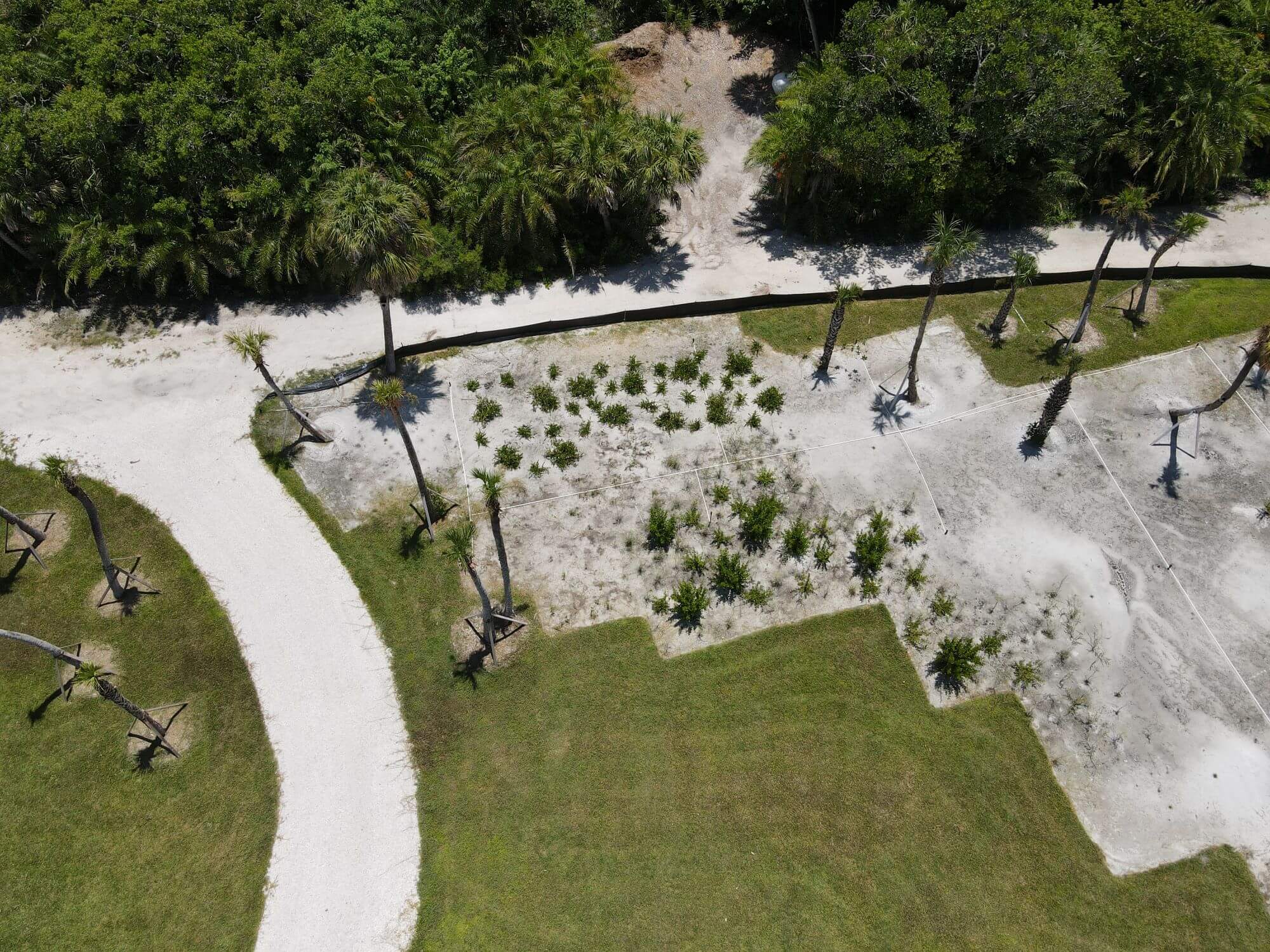
Post Hurricane Ian (2022)
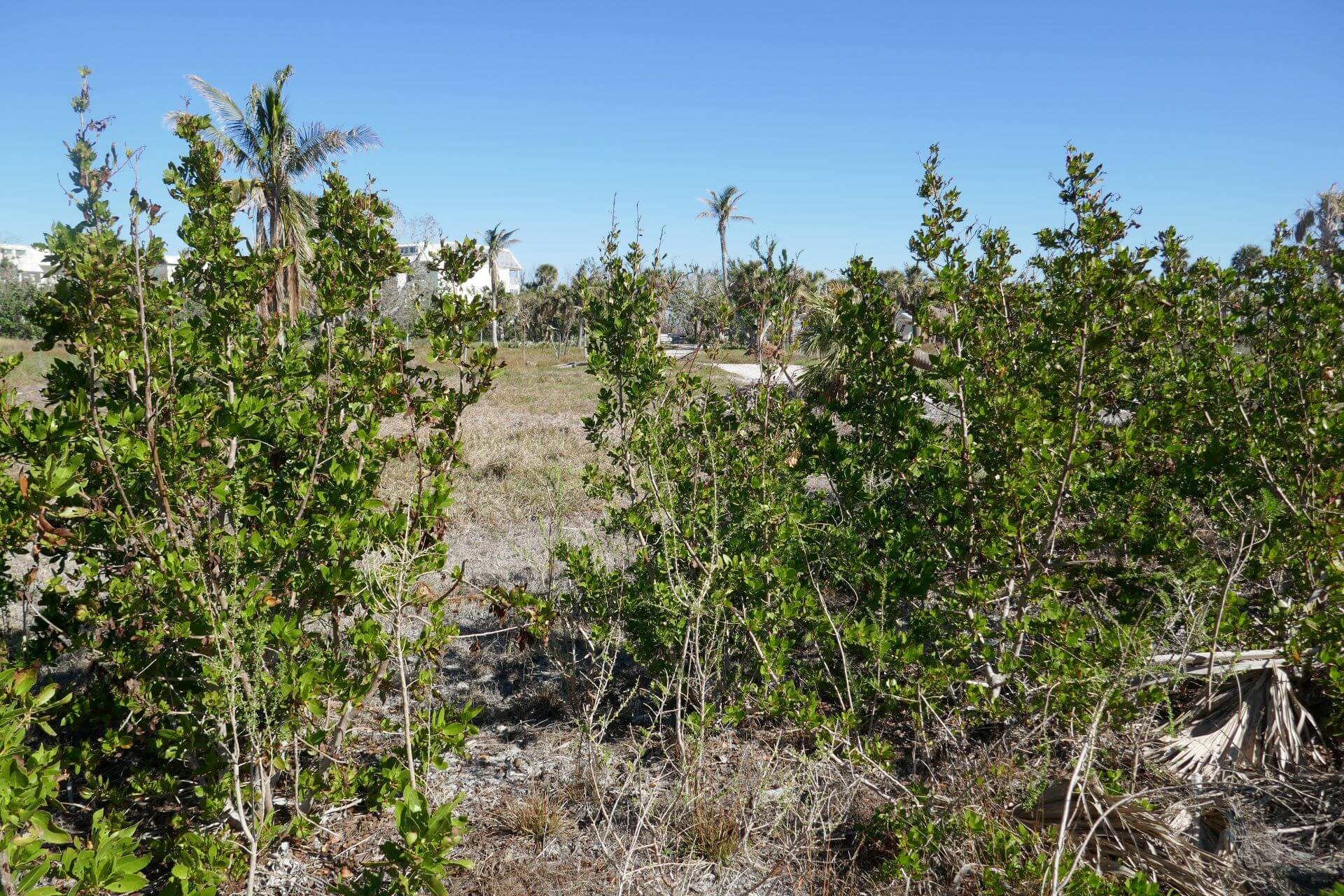
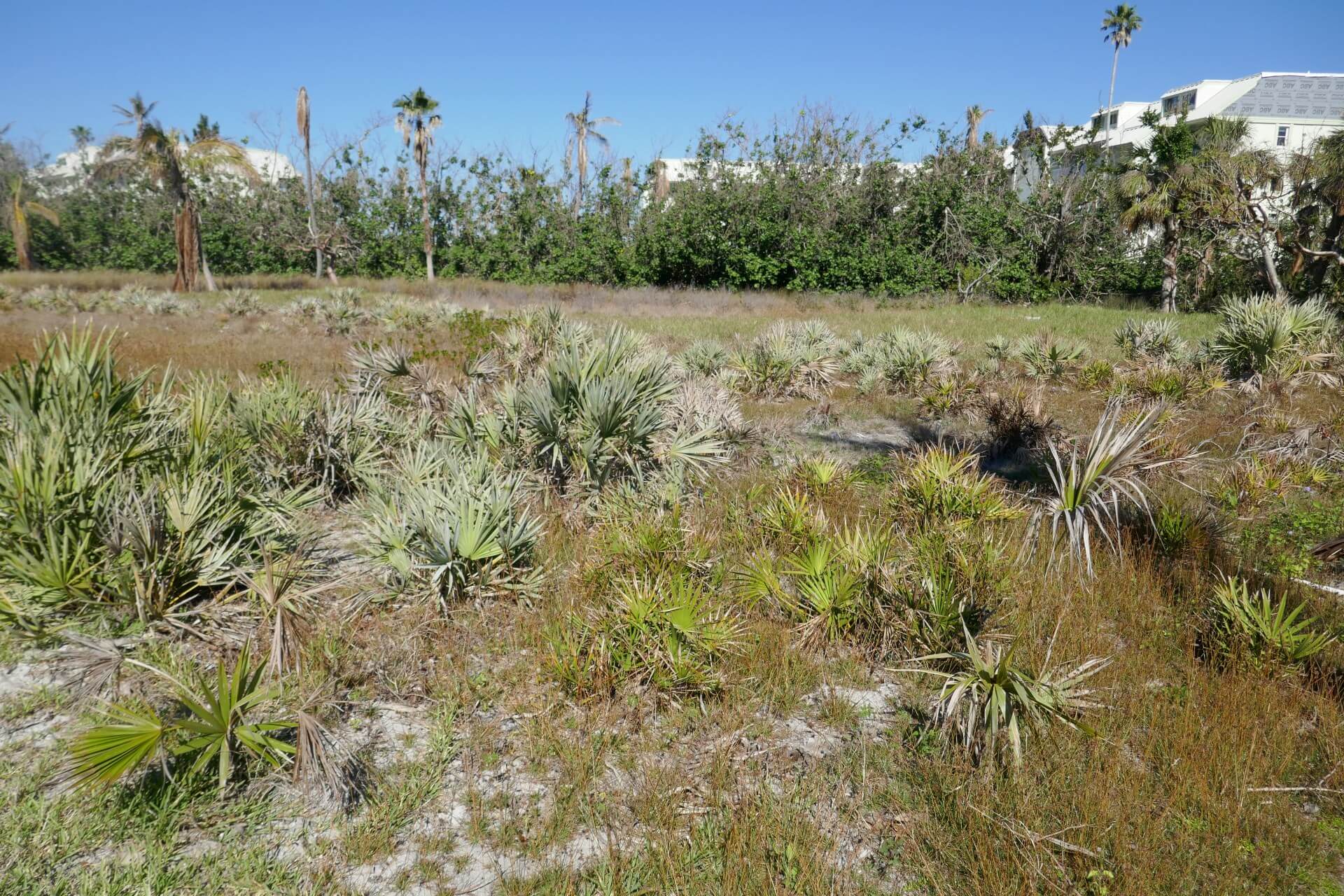
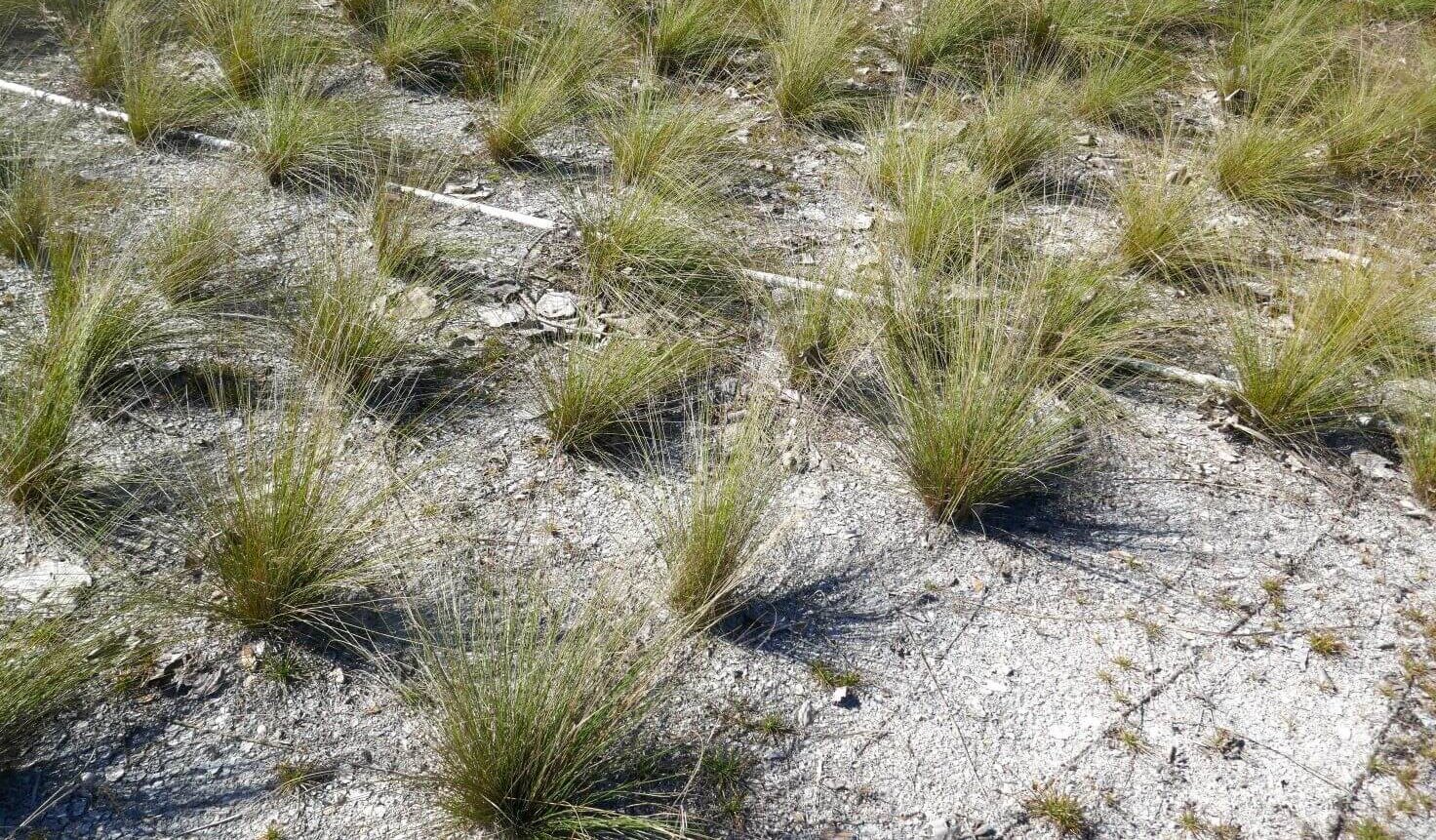

Post Hurricanes Helene , Milton (2024)
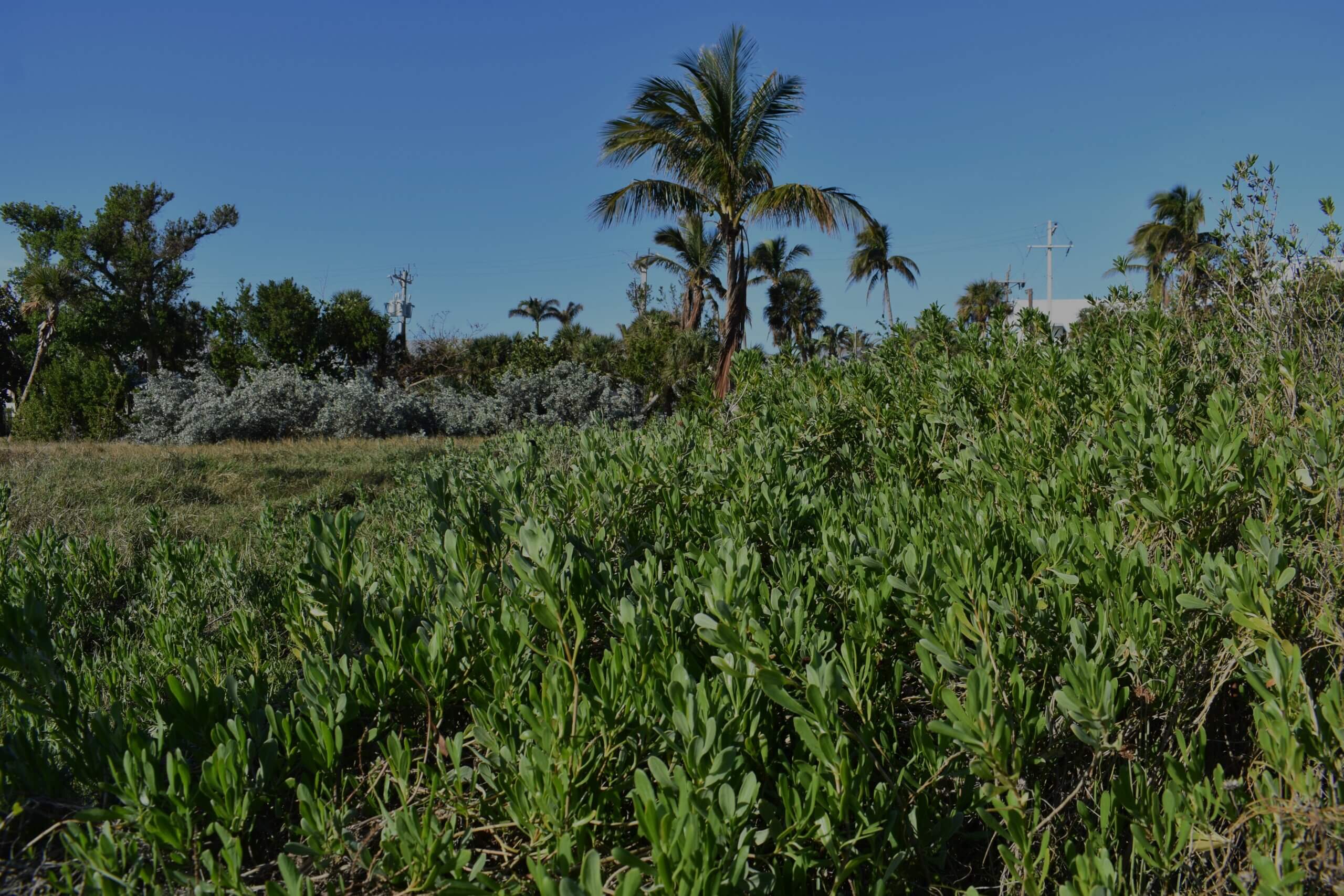
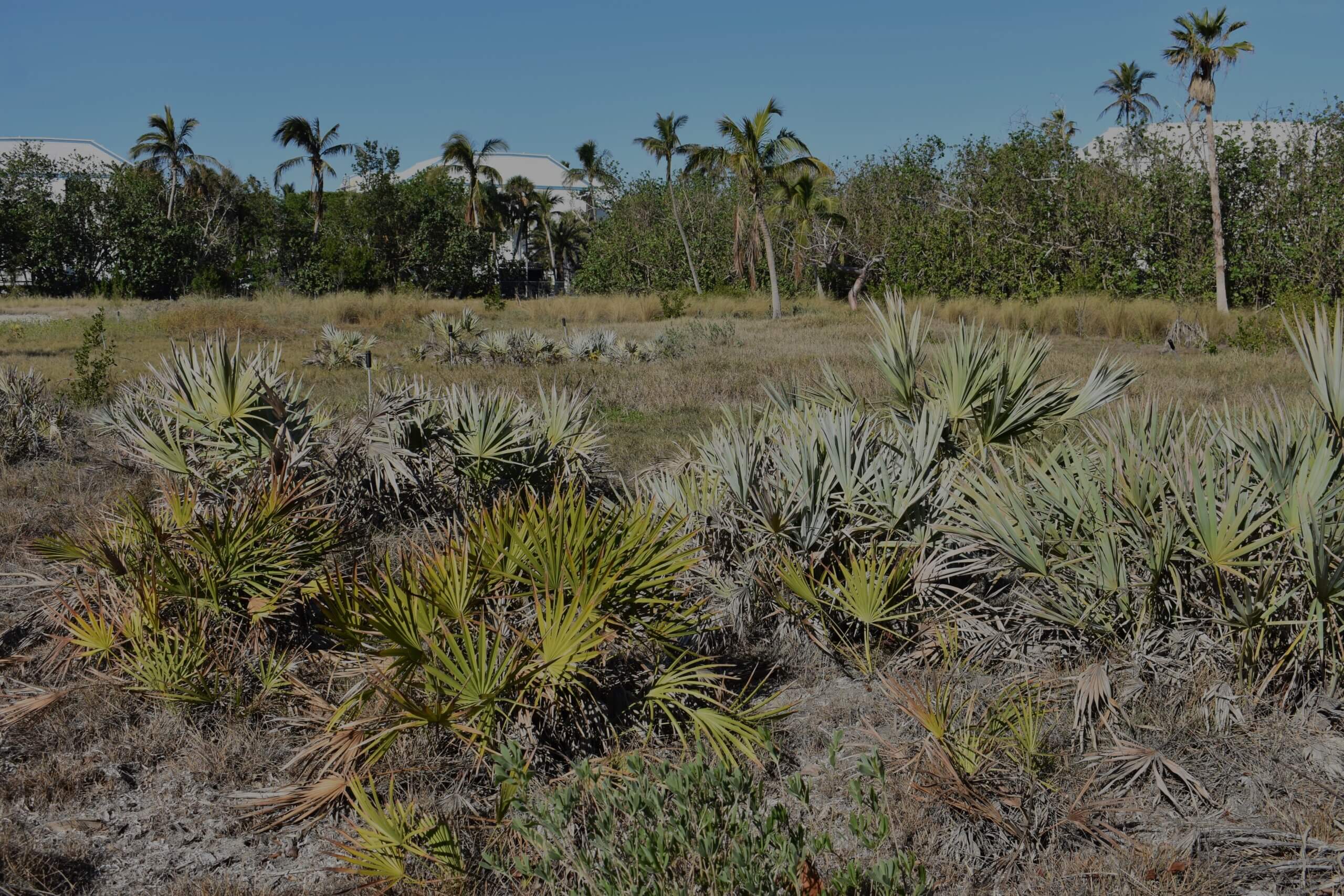
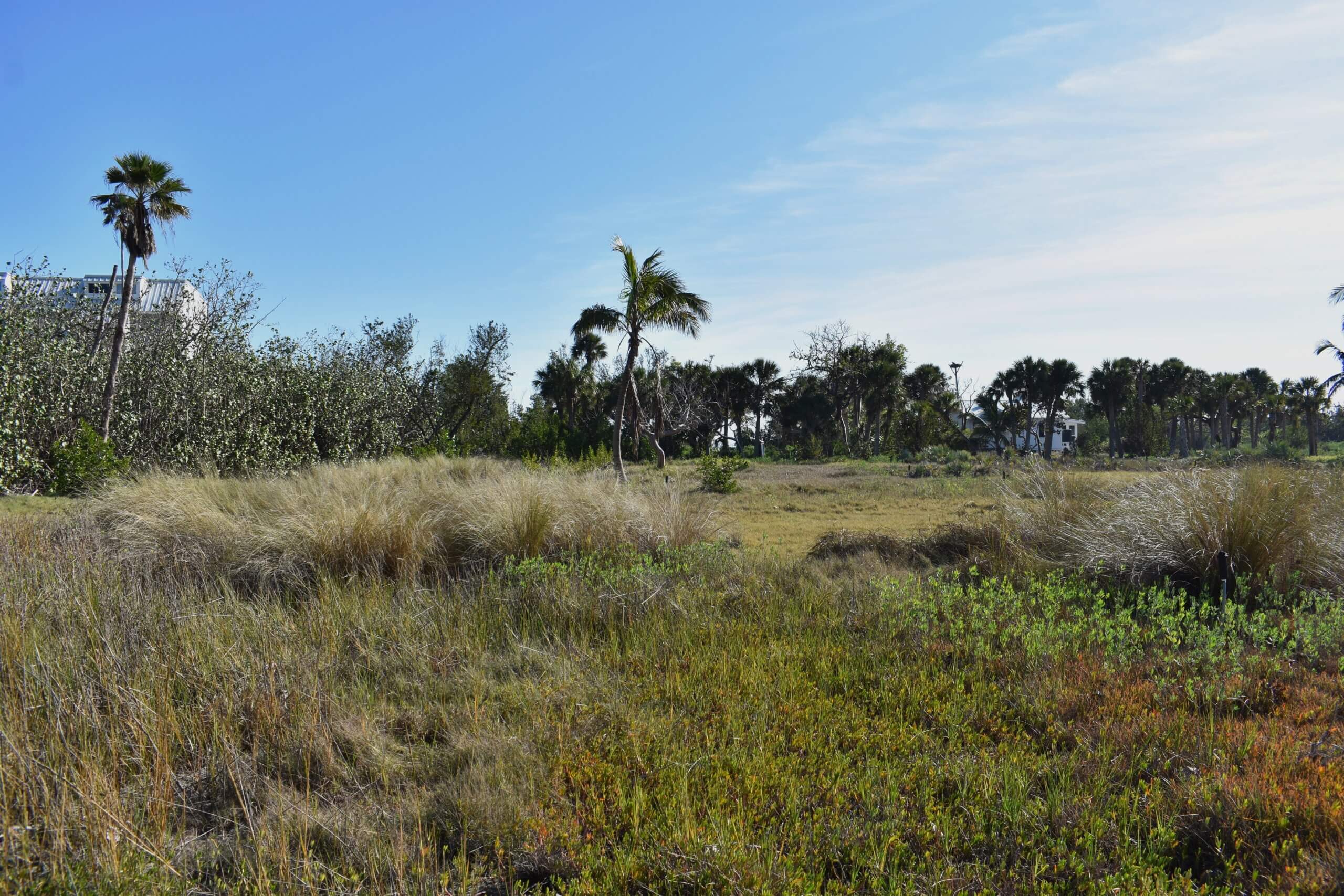
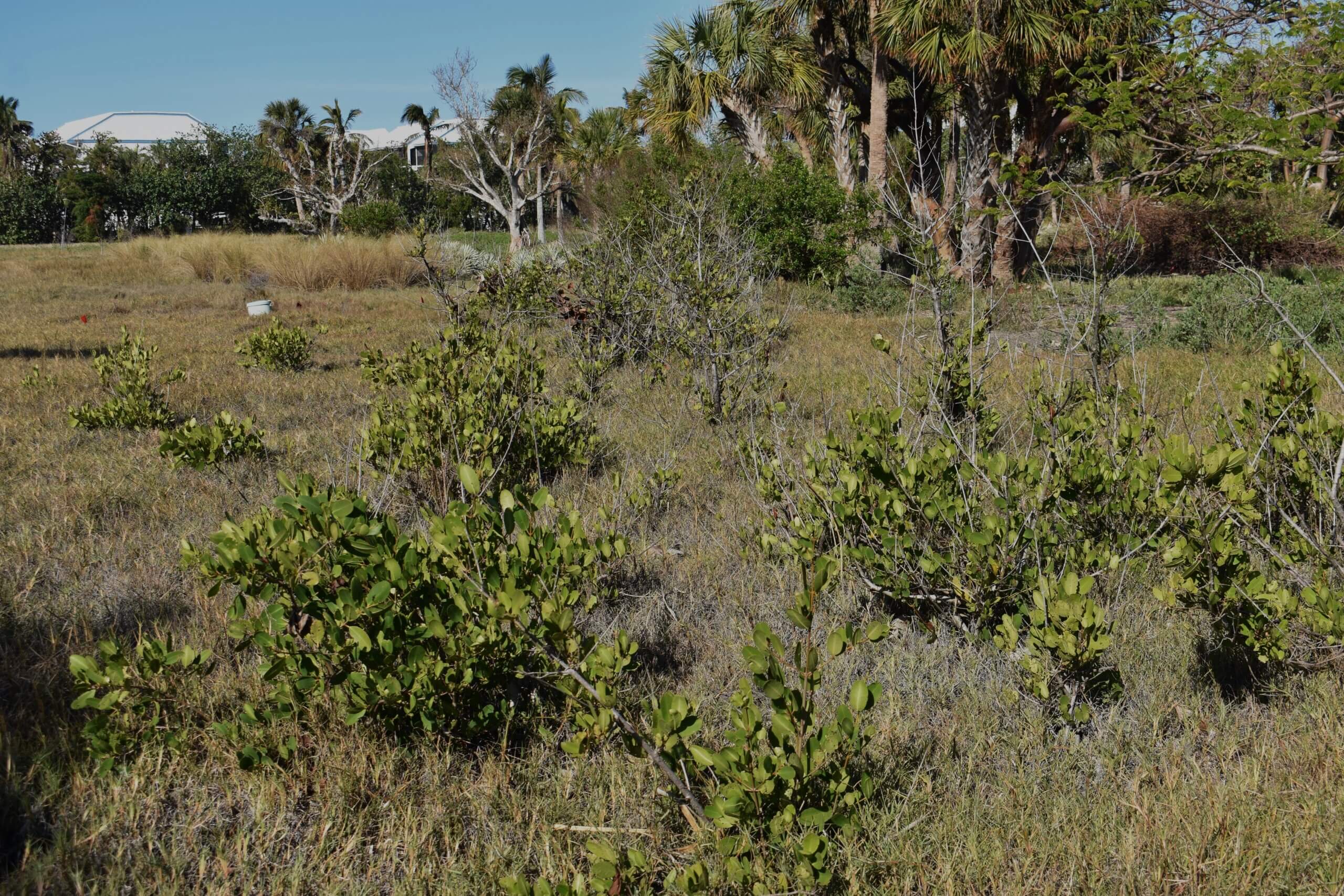
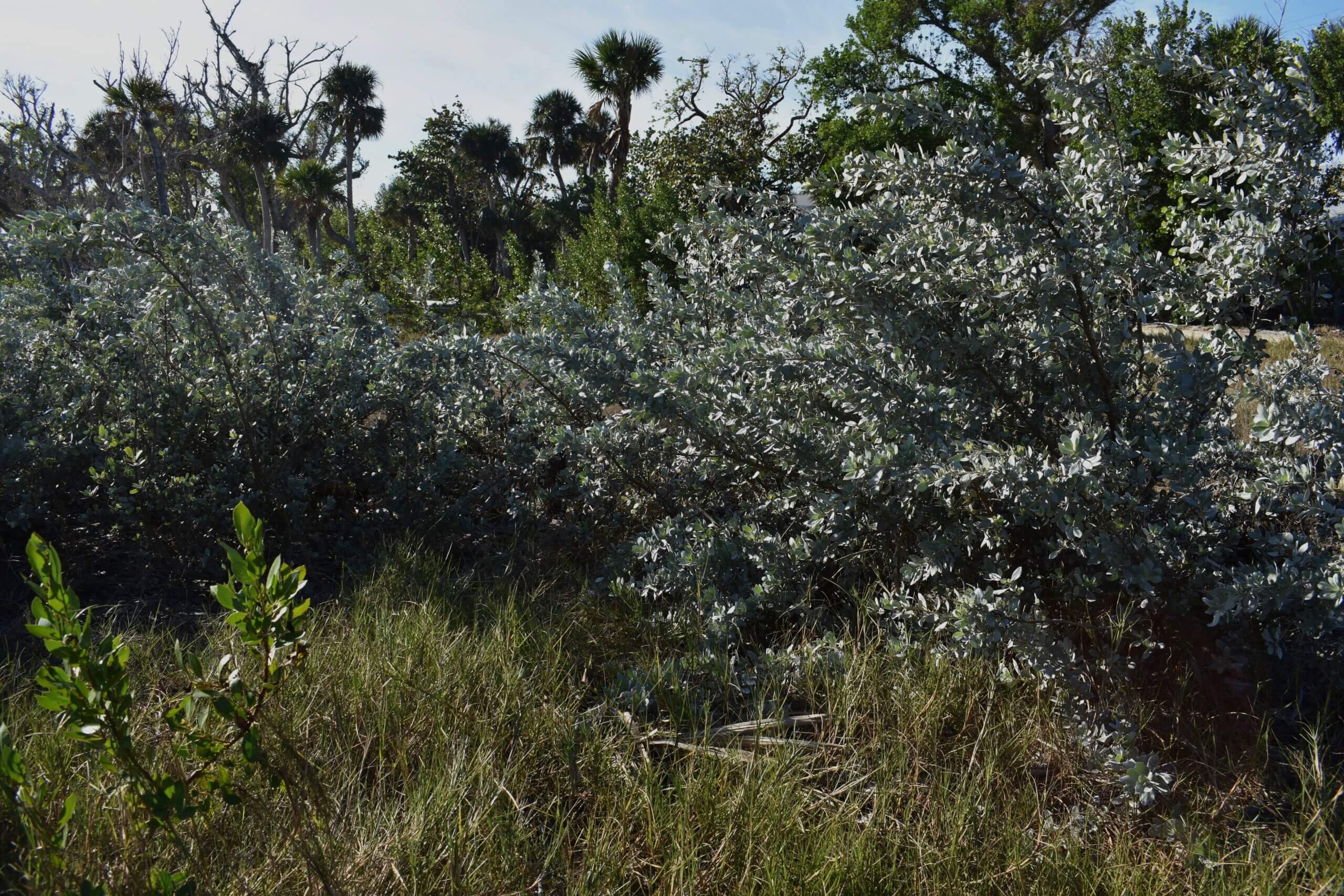
Installation
